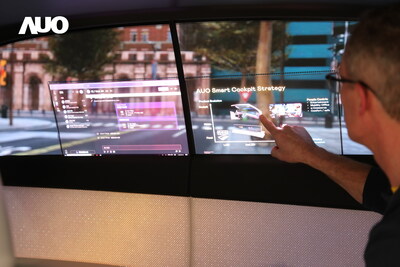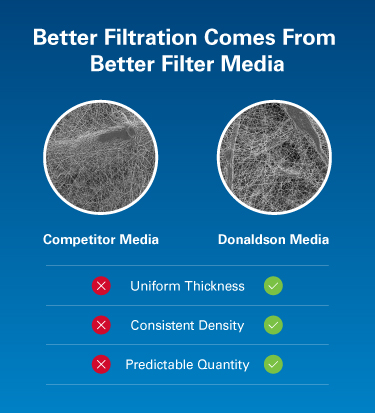
This is a transcript of the podcast interview with Dr. Peter Roessger, Business Development Director at TES Electronic Solutions.
Podcast
IQPC: How do Human Automotive Machine Interfaces change future navigation? My name is Joanna Scheffel – Online Content Manager with IQPC – and I’m talking to Dr. Peter Rössger – Business Development Director at TES Electronic Solutions. Good Morning, Mr. Rössger.
Rössger: Good morning.
IQPC: Regarding the development of automotive HMIs, what is the state of the art today?
Rössger: Well I’ve been in this business for the past almost 20 years, and I’ve been working for a major automotive for the past 12 years, and in that time I’ve experience a clear change in the way automotive HMIs are developed. There used to be a focus on the first tier in the past. During the time it changed more and more to be OEM issue, so particularly as far as head units are concerned, navigation systems, entertainment systems – the OEMs pull the HMI issues more and more to their side, recognizing that this a core differentiator with their competitors. Most of them do do most of the work themselves. The first tiers move back into more of a supporting role – that is, more a process role, and not so much a fresh ‘creative’ role. On the process side, I see the growing support of digital tools. So when I design my first HMIs, we start with a paper and pencil and then move on to specifications, which in some parts of the automotive industry still is state of the art, but we see more and more digital tools coming up – things that help the developers to go into early prototyping that ease up discussions in cross-national and international teams. And this is another change, and this has in fact had results in the HMI market share. I mean, if you use digital tools at a very early stage, this will affect the outcome that they share at the very end of the day. So I still force my teams into all making a lot of paper and pencil work at the beginning to keep the ways straight and the very open creative flow alive.
IQPC: You would have to buy digital tools. Could you give us some examples of those?
Rössger: Well I mean the electronic guide is one of the tools. We at TES Electronic Solutions also have our own solution, and that is the GUIliani tool, which allows us to do all these steps I just described – get very quick into prototyping, very quick into testing, which is a positive thing at the end of the day. Don’t get me wrong on this one. But all in all, I prefer to have some paper and pencil work at the beginning to keep it analogue until a certain point in time just to keep the creativity flow alive.
IQPC: Could you give us some benchmarks and no go’s concerning human machine interfaces?
Rössger: I think that the automotive industry is in a very comfortable situation on the one side, and exactly the same things put them in a very uncomfortable situation. Cars are sold worldwide, and they have a huge user group. I mean, almost everybody is driving a car and those digital devices, the entertainment systems, they get into almost every dashboard as of today. And so, from our point of view, this is a great chance to move forward, to make good HMIs. On the other hand, this ends up every now and again in definite no go’s. One of the issues is for example the cross cultural thing. I mean, big car companies sell their cars worldwide. And so you may have a Chinese driver, you may have a North American driver, you may have a German driver. And whatever works for one of these persons, will not work for another one. You also may have a 20 year old Apple-addicted, high tech oriented young person, and you may also have a 85 year old lady from the Mid West of the US which is very critical about technology. So, very general things just like ‘this is the best system on the market’ and ‘this is definitely a no go’ is not easy to do, and again I will not do this. But what developers have to keep in mind is the enormous user group that they have. It’s almost everybody on the world, and you have various cultures that you have in there. Cultures, I mean, geographical cultures but also by meaning technological approaches, use of technology, the use cases that you have. And if you are on the wrong path, definitely you get a no go out of this.
Interview with Dr. Peter Roessger on Human Machine Interfaces
This is a transcript of the podcast interview with Dr. Peter Roessger, Business Development Director at TES Electronic Solutions.
IQPC: How do Human Automotive Machine Interfaces change future navigation? My name is Joanna Scheffel – Online Content Manager with IQPC – and I’m talking to Dr. Peter Rössger – Business Development Director at TES Electronic Solutions. Good Morning, Mr. Rössger.
Rössger: Good morning.
IQPC: Regarding the development of automotive HMIs, what is the state of the art today?
Rössger: Well I’ve been in this business for the past almost 20 years, and I’ve been working for a major automotive for the past 12 years, and in that time I’ve experience a clear change in the way automotive HMIs are developed. There used to be a focus on the first tier in the past. During the time it changed more and more to be OEM issue, so particularly as far as head units are concerned, navigation systems, entertainment systems – the OEMs pull the HMI issues more and more to their side, recognizing that this a core differentiator with their competitors. Most of them do do most of the work themselves. The first tiers move back into more of a supporting role – that is, more a process role, and not so much a fresh ‘creative’ role. On the process side, I see the growing support of digital tools. So when I design my first HMIs, we start with a paper and pencil and then move on to specifications, which in some parts of the automotive industry still is state of the art, but we see more and more digital tools coming up – things that help the developers to go into early prototyping that ease up discussions in cross-national and international teams. And this is another change, and this has in fact had results in the HMI market share. I mean, if you use digital tools at a very early stage, this will affect the outcome that they share at the very end of the day. So I still force my teams into all making a lot of paper and pencil work at the beginning to keep the ways straight and the very open creative flow alive.
IQPC: You would have to buy digital tools. Could you give us some examples of those?
Rössger: Well I mean the electronic guide is one of the tools. We at TES Electronic Solutions also have our own solution, and that is the GUIliani tool, which allows us to do all these steps I just described – get very quick into prototyping, very quick into testing, which is a positive thing at the end of the day. Don’t get me wrong on this one. But all in all, I prefer to have some paper and pencil work at the beginning to keep it analogue until a certain point in time just to keep the creativity flow alive.
IQPC: Could you give us some benchmarks and no go’s concerning human machine interfaces?
Rössger: I think that the automotive industry is in a very comfortable situation on the one side, and exactly the same things put them in a very uncomfortable situation. Cars are sold worldwide, and they have a huge user group. I mean, almost everybody is driving a car and those digital devices, the entertainment systems, they get into almost every dashboard as of today. And so, from our point of view, this is a great chance to move forward, to make good HMIs. On the other hand, this ends up every now and again in definite no go’s. One of the issues is for example the cross cultural thing. I mean, big car companies sell their cars worldwide. And so you may have a Chinese driver, you may have a North American driver, you may have a German driver. And whatever works for one of these persons, will not work for another one. You also may have a 20 year old Apple-addicted, high tech oriented young person, and you may also have a 85 year old lady from the Mid West of the US which is very critical about technology. So, very general things just like ‘this is the best system on the market’ and ‘this is definitely a no go’ is not easy to do, and again I will not do this. But what developers have to keep in mind is the enormous user group that they have. It’s almost everybody on the world, and you have various cultures that you have in there. Cultures, I mean, geographical cultures but also by meaning technological approaches, use of technology, the use cases that you have. And if you are on the wrong path, definitely you get a no go out of this.
Want to learn more about current technologies and developments in automotive navigation?
Visit our download centre for more articles, whitepapers and interviews:














More Stories
AUO Returning to CES Showcase Next Generation Smart Cockpit 2025
Donaldson Ultra-Web technology aims to set the standard in industrial filtration for cleaner air and cost-savings
Hydrogen’s Role in Decarbonising Sports and Entertainment Events